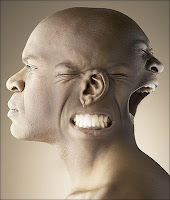Ninguna emoción negativa que no enfrentemos y reconozcamos por lo que es puede realmente disolverse por completo. Deja tras de sí un rastro de dolor.
Para los niños en particular, las emociones negativas fuertes son demasiado abrumadoras, razón por la cual tienden a tratar de no sentirlas. A falta de un adulto completamente consciente que los guíe con amor y compasión para que puedan enfrentar la emoción directamente, la única alternativa que le queda al niño es no sentirla. Desafortunadamente, ese mecanismo de defensa de la infancia suele permanecer hasta la edad adulta. La emoción sigue viva y, al no ser reconocida, se manifiesta indirectamente en forma de ansiedad, ira, reacciones violentas, tristeza y hasta en forma de enfermedad física. En algunos casos, interfiere con todas las relaciones íntimas y las sabotea. La mayoría de los psicoterapeutas han tenido pacientes que comienzan afirmando que su infancia fue completamente feliz y más adelante terminan diciendo todo lo contrario. Si bien esos son los casos más extremos, nadie pasa por la infancia sin sufrir dolor emocional. Aunque los dos progenitores hayan sido personas iluminadas, el niño crece en medio de un mundo principalmente inconsciente.
Todos los vestigios de dolor que dejan las emociones negativas fuertes y que no se enfrentan y aceptan para luego dejarse atrás, terminan uniéndose para formar un campo de energía residente en las células mismas del cuerpo. Está constituido no solamente por el sufrimiento de la infancia, sino también por las emociones dolorosas que se añaden durante la adolescencia y durante la vida adulta, la mayoría de ellas creadas por la voz del ego. El dolor emocional es nuestro compañero inevitable cuando la base de nuestra vida es un sentido falso del ser.
Este campo de energía hecho de emociones viejas pero que continúan muy vivas en la mayoría de las personas, es el cuerpo del dolor.
Sin embargo, el cuerpo del dolor no es solamente individual. También participa del sufrimiento experimentado por un sinnúmero de seres humanos a lo largo de una historia de guerras tribales, esclavitud, rapacería, violaciones, torturas y otras formas de violencia. Ese sufrimiento permanece vivo en la psique colectiva de la humanidad y se acrecienta día tras día como podemos comprobarlo viendo los noticiarios u observando el drama de las relaciones humanas. En el cuerpo colectivo del dolor seguramente está codificado el ADN de todos los seres humanos, aunque todavía no se haya podido demostrar.
Todos los seres que llegan al mundo traen consigo un cuerpo de dolor emocional. En algunos es más pesado y denso que en otros. Algunos bebés son bastante felices la mayoría de las veces.
Otros parecen albergar una gran cantidad de tristeza. Es cierto que algunos bebés lloran mucho porque no reciben suficiente atención y cariño, pero hay otros que lloran sin razón aparente, como si quisieran que todas las personas a su alrededor fueran tan infelices como ellos, lográndolo a veces. Han llegado al mundo con una carga pesada de sufrimiento humano. Otros bebés lloran con frecuencia porque detectan las emanaciones de las emociones negativas de sus padres, lo cual agranda su cuerpo del dolor al absorber la energía de los cuerpos del dolor de sus padres. Independientemente de la razón, a medida que crece el cuerpo físico, crece también el cuerpo del dolor.
El bebé que nace con un cuerpo del dolor liviano no será necesariamente un adulto más «avanzado espiritualmente» que el que nace con un cuerpo más denso. De hecho, muchas veces sucede lo contrario. Las personas cuyo cuerpo del dolor es más pesado generalmente tienen mayores oportunidades de despertar espiritualmente que quienes llegan con un cuerpo relativamente liviano. Mientras algunas permanecen atrapadas en sus cuerpos densos, muchas otras llegan a un punto en que ya no toleran su infelicidad, de manera que se acentúa su motivación para despertar.
¿Por qué es tan significativa en la conciencia colectiva de la humanidad la imagen del Cristo agonizando con su rostro distorsionado por el sufrimiento y su cuerpo manchado con la sangre de sus heridas?
Los millones de personas, especialmente durante la Edad Media, no se habrían identificado tan profundamente con esa imagen si ésta no hubiera encontrado eco con algo dentro de ellas o si no la hubieran reconocido inconscientemente como una representación de su propia realidad interna, de su cuerpo del dolor. Todavía no estaban lo suficientemente conscientes para reconocerla directamente en su interior, pero fue el primer paso para hacerlo. Cristo puede considerarse como el arquetipo humano en quien se albergan tanto el dolor como la posibilidad de trascendencia.
(Una Nueva Tierra, Eckhart Tolle)

